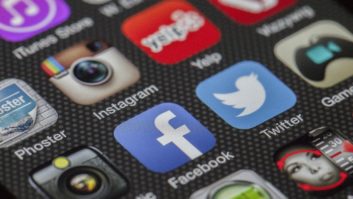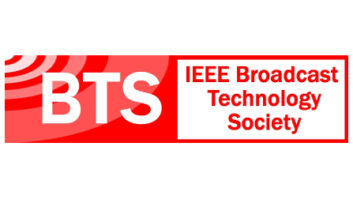People talk about datacasting like it’s something out of the future, but if you have a digital studio and are broadcasting an HD Radio signal, you are already datacasting. Datacasting, or messagecasting as we call it at BE, is simply the broadcasting of data, whether it’s audio or a text message in the form of data.
Messages can be delivered via HD Radio as part of the digital broadcast for readout on HD Radio tuners, or generated on the analog FM signal by using an RBDS encoder for readout on radios with RBDS. Either way, you’ll find all sorts of information to messagecast for profit or promotion or simply for listener enjoyment.
Simple artist and title information is how most stations start, but messagecasting can be much more. The ability to incorporate station promotions, advertiser messages and the like is transforming messagecasting from a simple way to send data embedded in automation files into something that will add a new dimension to how we do business.
More than song title/artist
Song artist and title information is interesting and may have some value to the listener, but displaying simple artist/title information for three minutes straight as a song plays isn’t the optimal use of the technology.
A lot of BE customers are rotating artist/title data with messages promoting advertisers or their stations. They’re promoting advertisers and pushing upcoming contests or cross-promoting other dayparts. It’s an approach called interleaving, and it’s something good messagecasting software can do today.
Interleaving call letters and slogans with song information reinforces your brand, which can be handy when your listeners write in their diaries about their favorite stations. Messages can be configured to recycle listeners from one daypart to another, increasing TSL.
There’s also the ability to tie text messages to specific on-air commercials, one easy way for advertisers to take advantage of messagecasting. The Radio Experience (TRE) makes it possible to display short messages as audio commercials run, possibly phone numbers, addresses or tag lines of advertisers. Moreover, messages can be associated with any audio, not just commercials. Clients can sponsor any programming on the station, from sports and news to contests and syndicated programming.
TRE messagecasting software allows the user to schedule the promotional messages being sent. The software has scheduling tools that allow users to set up blocks of messages (similar to rotating carts) and change the messages hour-to-hour. TRE online tools allow instant updates, to keep up with current contests and winners.
What’s more, new opportunities are already being developed that take advantage of HD Radio technology. For example, instant traffic updates are being delivered in many large urban areas today. TRE software can bring in all sorts of data and present it in connection with audio, creating sponsorship and revenue opportunities.
Behind message-casting

A screen shot from BE’s latest TRE system, released at the 2008 NAB Show, showing text messages linked to audio events.
Click image to enlarge
Digital automation systems take a lot of the work out of messagecasting, because so much information can be stored in a digital file. In fact, practically all automation systems store information with each cut of audio.
Remember carts? Every cart has at least one slightly greasy file-folder label attached that describes what’s on the cart: the artist/voice talent, information about start and end dates, and any other information the production department thinks is important. It’s not surprising that this convention of storing data with each cut followed to the digital automation systems that replaced most of our cart machines. Instead of a file-folder label, each digital cut has a virtual label (information stuck on a cart is stored digitally). Because this data is specifically related to the audio on the cart, or the program, this is the data we refer to as PAD, or program associated data.
Other data can be sent to listeners as well. In the studio of most stations are notecards with concert dates, ticket information, facts about a particular band or song, or possibly a contest to win the CD, song download or concert tickets. Messages directly related to the cut on the air are called near-PAD. These messages are usually not stored in the automation system with the cut, but in a separate database managed by BE’s TRE messagecasting software.
Then there’s non-PAD, or those messages not directly related to programming on the air. Think of these as the other set of liner cards next to the jock notes related to particular songs. These cards have messages like sports scores, stock tickers, weather information and traffic updates. They can also include station promotional messages like liners and promos. Like near-PAD, these messages are not usually stored in the automation system with the cut, but can be stored in a separate database managed by TRE software.
Near- and non-PAD have commercial applications as well. All the adjacencies, tags and sponsorships we’ve done for years on the air can be messagecast. We’ve managed this data in our analog world for years, storing data on file-folder labels and notecards, and delivering it during segues and coming in and out of breaks. These opportunities to talk about our station and communicate valuable information have been limited to times when the jock can open the mic. With messagecasting, we manage the same information digitally, but we have the opportunity to share it with our listeners all the time.
Messages to the listener
Most automation systems can export PAD, so all that is left is selecting messagecasting software to read that program associated data, integrate the near- and non-PAD messaging content, format it for the HD Radio or RBDS equipment, and then inject the formatted data stream into the air chain. Some key components are needed to start messagecasting.
Source: Generally, a program source refers to a digital automation system, although other sources are possible, such as the Broadcast Electronics CD Live software that generates PAD from a CD player using Internet lookups. There are three basic methods digital automation systems use to output “now playing” information: Serial using a COM port, TCP/IP using an Ethernet connection, and with a file that is updated by the software with each new event. Each automation system is different, so check with the manufacturer to determine your system’s specific capabilities.
Message-casting, TRE: The second basic component is messagecasting software such as BE’s TRE Message Manager. Messagecasting software will accept incoming PAD from an automation system, manage near- and non-PAD and format the data for encoding. TRE has scheduling software that links audio and message events together. For example, a text message promoting a concert can be linked to an artist name, so that whenever TRE sees a song playing on the air from that particular artist, it knows to schedule the text at the same time.
Encoder: The third basic component will be an RBDS encoder or the HD Radio software. An RBDS encoder receives the output from the message-casting software via a serial or IP connection and sends the encoded data stream to the exciter through a BNC connection. The RBDS encoder also inserts other bits of data defined by the RBDS standard into the encoded stream, such as the station call letters and station format.
The encoding process for HD Radio is handled by an HD Radio importer, which includes Ibiquity encoding software.
Transport/transmission: The last element is equipment capable of managing the transport and transmission of the encoded data. For RBDS, the encoded data is an analog/serial stream and can be transported from studio to transmitter using STLs with data transport capability. For HD Radio, the STL must have IP transport capability if the data is encoded at the studio site. Alternately, the pre-encoded data can be sent to the transmitter site as a serial stream, and encoded for HD Radio at the transmitter site.
Roberts is the datacasting product manager for Broadcast Electronics, Quincy, IL.











